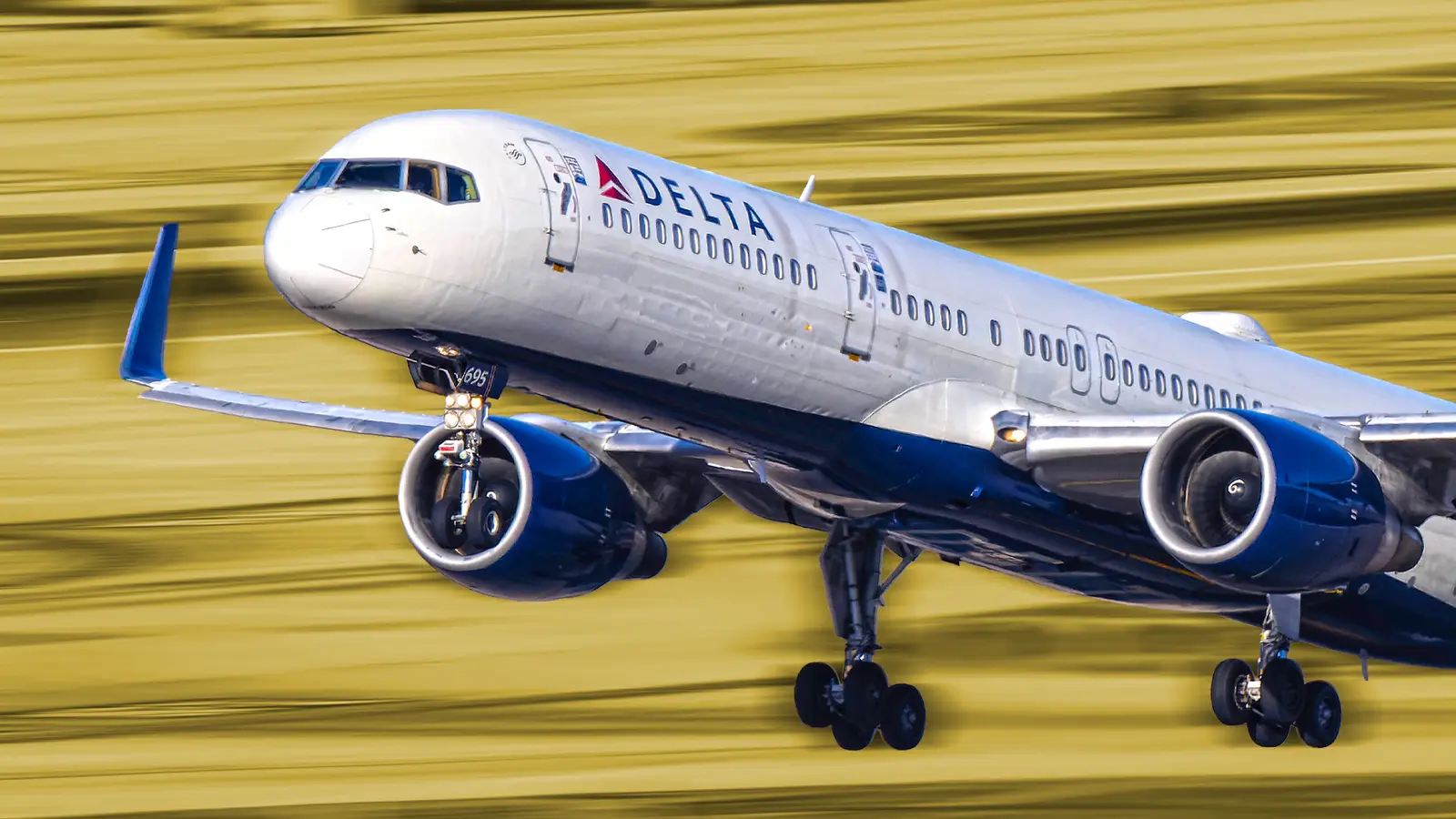Copyright Simple Flying

Delta Air Lines is one of the biggest airlines in the world, and one of the largest domestic carriers. The company was founded in 1924 as a crop-dusting operator, but it has since evolved into one of the world's most recognized carriers. Over the years, Delta Air Lines has grown to fly over 5,000 daily flights to over 300 destinations. These destinations include cities in over 50 countries on six continents. The Atlanta, Georgia-based airline operates from several major hubs across the United States, including John F. Kennedy International Airport (JFK), Minneapolis-St. Paul International Airport (MSP), and Detroit Metropolitan Wayne County Airport (DTW), among others. Because of the airline's extensive route network, it operates a wide variety of aircraft. One of the most prominent aircraft in the Delta fleet is the Boeing 757. As the largest operator of the aircraft, Delta Air Lines has flown the aircraft type since the 1980s. Let's take a closer look at why Delta Air Lines still operates an extensive fleet of aging Boeing 757s. The Boeing 757 Solves A Gap In Delta's Operations Today, Delta Air Lines operates a fleet of 110 different Boeing 757s. The airline's continued reliance on the 757 may seem odd, especially as newer, more efficient aircraft have come to dominate the commercial aviation industry. Even so, the Boeing 757 serves as a bridge between Delta's narrowbody and widebody fleets, which is ideal for missions that demand both range and performance. The main reason Delta continues to utilize the Boeing 757 is because of the aircraft's exceptional operational flexibility. The aircraft's design allows it to operate efficiently from airports with short runways and hot climates, which may challenge other aircraft types. Because of this, the Boeing 757 operates well from important Delta destinations, like New York-JFK, Boston, and Salt Lake City. Additionally, the 757 fits well into Delta's operations on transatlantic and Latin American routes that require a long range but do not justify a widebody aircraft. Economics also play a major role in keeping these aircraft, as the ownership costs are minimal compared to newer aircraft. Additionally, the production of the Boeing 757 ended twenty years ago. Since then, no one-for-one replacement has been introduced to directly replace these aircraft. Delta has instead chosen to continue investing in this aircraft, especially due to its strong performance and reliability. A Brief History Of The Boeing 757 Early designs of the Boeing 757 can be traced to the early 1970s, when Boeing was seeing success with the launch of the first widebody airliner, the Boeing 747. At this point, Boeing began to study further developments of its narrowbody Boeing 727. By 1978, Boeing had settled on several designs for a new aircraft, later designating the aircraft the Boeing 757. The aircraft program was officially launched in March 1979, after Eastern Air Lines and British Airways both placed orders for a total of 40 aircraft. The first Boeing 757 conducted its maiden flight in February 1982. After an extensive flight testing program, the aircraft achieved type certification from the Federal Aviation Administration (FAA) in December 1982. Eastern Air Lines was the launch operator of the Boeing 757, officially introducing the aircraft into commercial service on January 1, 1983, flying from Hartsfield-Jackson Atlanta International Airport (ATL) in Georgia to Tampa International Airport (TPA) in Florida. Overall, Boeing produced the 757 variant from 1981 through 2004, delivering over 1,000 total aircraft. Many of these aircraft are still in service today, including 110 with Delta Air Lines. The Major Design Features And Performance Specifications Of The Boeing 757 At the time, the Boeing 757 was introduced as one of the most technologically advanced aircraft and compared to earlier narrowbody Boeing aircraft, such as the Boeing 727, the Boeing 757 had improved aerodynamics and fuel efficiency. Boeing also introduced a high-performance supercritical wing. This wing, which later included blended winglets, helped reduce the aircraft's drag and improve its fuel efficiency, while also allowing the aircraft to have excellent short-field runway performance. Boeing introduced the 757 with several different engine options, as did many airliners at the time. The two options for the 757 were the Rolls-Royce RB211 and the Pratt & Whitney PW2000. These engines each provided the aircraft with over 40,000 pounds of thrust. According to Boeing, this allowed the aircraft to achieve the following performance specifications: As a narrowbody aircraft, the Boeing 757 typically seats passengers in a six-abreast configuration. The smaller variant in the 757 series, the 757-200, can seat a maximum of 239 passengers. However, in a two-class configuration, the 757-200 seats around 200 passengers. The larger variant, the 757-300, seats a maximum of 295 passengers or 243 passengers in a two-class configuration. The Delta Air Lines Fleet Of Boeing 757s According to ch-aviation, Delta Air Lines flies a total of 110 Boeing 757s, making it the largest operator of the aircraft type in the world. The airline operates a total of 94 757-200s, with an average age of 28.6 years. Delta also flies 16 757-300s, which have an average age of 22.8 years. Of the 757-200s that Delta operates, the youngest variant in its fleet is just under 21 years old. This aircraft, registered as N823DX, has a C/N of 1050. However, the oldest active 757-200 in its fleet is 36.5 years old. Registered as N649DL, this aircraft has a C/N of 229. According to Delta Air Lines, the 757s in Delta's fleet have a typical configuration of: Delta also operates a smaller fleet of the Boeing 757-300, flying only 16 of the type. The oldest aircraft in the airline's fleet is registered as N581NW, which was originally delivered to Northwest Airlines in August 2002. This aircraft is 23.71 years old and has a C/N of 1001. The youngest 757-300 in the Delta fleet is registered as N596NW and is 22.1 years old. Where Delta Air Lines Flies The Boeing 757 Delta Air Lines utilizes the Boeing 757 on a wide variety of routes, including a mix of both domestic and international routes. The 757 fills a gap in Delta's network, as it can fly both high-demand transcontinental routes and thinner long-haul markets that do not require a widebody aircraft. In terms of domestic routes, Delta Air Lines flies the Boeing 757 on some of its most competitive and premium routes. Because of this, the 757 can be found on many transcontinental services, such as connecting John F. Kennedy International Airport (JFK) in New York City, New York, to the following destinations: Los Angeles International Airport (LAX) in California, San Francisco International Airport (SFO) in California, and Seattle-Tacoma International Airport (SEA) in Washington. Additionally, Delta operates the 757 on many high-demand business routes. This includes connecting some of its major hubs in Atlanta, Detroit, and Minneapolis, to major destinations like Orlando, Las Vegas, and Salt Lake City. Delta Air Lines also flies the Boeing 757 on several major international routes. Specifically, the aircraft helps the airline connect secondary US cities to both Europe and Latin America, which would otherwise be unprofitable with large widebody aircraft. The Boeing 757 is used heavily from JFK and Boston Logan International Airport (BOS) to several European destinations, like Dublin, Reykjavík, Shannon, and Edinburgh. Additionally, the 757 is used to connect major US cities to destinations in South America and the Caribbean, such as Bogotá, Lima, and Aruba. The Other Aircraft In The Delta Air Lines Fleet Although Delta Air Lines is the largest operator of the Boeing 757 in the world, it operates a diverse fleet of aircraft to round out its extensive operational network. Overall, the airline flies over 1,000 total aircraft. This includes other narrowbody aircraft like the Boeing 737 and major widebody aircraft for long-haul routes. Additionally, Delta flies a total of 80 Airbus A220s and 80 Boeing 717s, which may not directly fall into one category. In terms of narrowbody aircraft, Delta flies both Boeing and Airbus aircraft. According to ch-aviation, the airline flies several variants in the Airbus A320 family, including the A319, A320, A321, and A321neo. Additionally, Delta operates several aircraft from the Boeing 737 series, including the Boeing 737-800 and the 737-900ER.



